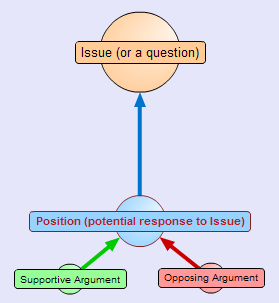A baseline to measure my understanding against a source when the industry hasn't yet identified a trusted source for the expertise.
IMPORTANT:
The following does not reflect my attending any of the courses listed.
This is merely an assessment (self) against the criteria for courses in one of the many forums bringing forward certification options.
How do I currently measure up in the industry? What experiences have I proven in this career path?
IASA Coursework
Architecture Course Subject Areas
a) Business Technology
b) Design Architecture
c) Human Dynamics
d) IT Environments
e) Infrastructure Architecture
f) Specializations
Level 3 and 4
a) Business Technology
- Introduction Business-Technology Strategy
- Business Fundamentals
- Strategy Development
- Industry Analysis
- Business Valuation
- Investment Prioritization and Planning
- Requirements, Discovery and Constraints Analysis
- Compliance
- Business Process Architecture tools and analysis
- Decision Support
- Knowledge Management
- Introduction to Design
- Requirements Modeling
- Business Architecture Standards
- Architecture Description
- De-Composition and Re-use
- Design Methodologies and Process
- Design Patterns and Styles
- Design Analysis and Testing
- Trace ability Throughout the Lifecycle
- Views & Viewpoints
- Whole Systems
c) Human Dynamics
- Managing the Culture
- Customer Relations
- Leadership and Management
- Presentation Skills
- Writing Skills
d) IT Environments
- IT Environment Introduction
- Technical Project Management Capabilities
- Asset Management
- Change Management
- Application Development
- Governance
- Testing Methods, Tools, and Techniques
- Platforms and Frameworks
e) Infrastructure Architecture
- Infrastructure Architecture Introduction
- Access and Identity Management
- Capacity Planning
- Common Application Services
- Device Management
- Infrastructure RAS
- Network Design
- Operations
- System Management and Services
- Data Center Design
- Provisioning
- Disaster Recovery and Backup
- High Availability Computing Environment
f) Specializations
- Quality Architecture
- Introduction to Quality Attributes
- Balancing and Optimizing Quality Attributes
- Manageability, Maintainability, Supportability, Extensibility, and Flexibility
- Advanced Quality Attributes
- Advanced Stakeholder Management
- Monitoring and Management
- Performance, Reliability, Availability, Scalability
- Security
- Usability, Localization, Accessibility, Personalization/Customizability
- Software Architecture
- Software Architecture Specialties
- Software Architecture Development Methodologies and Processes
- Software Architecture Tools
- Software Engineering for Architects
- Services, Workflow and Messaging
- Packaging, Delivery, Post Deployment
PLEASE NOTE: I PERSONALLY HAVE NOT TAKEN ANY OF THE COURSES.
MY GOAL WAS TO SEE WHERE I NEEDED TO STUDY AFTER INTERACTING WITH INDUSTRY experts on LinkedIn. My network was built in a way to help me in meeting this objective and my interactions with each person allowed me to change my scores originally low based on feedback.
However, since the feedback was given I personally reflected and sought validation from unbiased parties.
The work I did in the Business Architecture forum working with various groups discussions; aka "highway analogy" has been presented in a series of presentations on SlideShare and my profile in LinkedIn.
Michael Paul Ervick and Syed Ahmail both were supportive of the materials.
In fact, Syed confirmed this material was a candidate for using as the Outside In EA message.
Industry Development and influence of the direction COMPLETE - January 2012
The highest scores in this list require industry recognition for developing in scoring a 10 or contributing as a 9.
Both of these named experts would be considered industry experts and the outside in EA subject.
I influenced this EA subject in order to simplify the technology strategy and approach regardless of industry.
Assume;
The legal aspect of any private company using practices for quality and integrity.
The ability to realize agility not to be confused with an agile software model.
- The strategy for any company of any size would be to enable an offer or supply the mechanism for others to innovate offers as a service provider.
- A well defined Enterprise Architecture isn't going to change often when delivered well.
- These experts define the reference architecture to the outcome model-As Is
- These experts have accountability for the target state ensuring the operational architecture maintains consistency and redundancy.
- A business architect ensures the development of any strategy has been defined within the current state with any major maintains the integrity of the current state to the target state in the people, process and technology by serving as the subject matter expert on behalf of the business functions.
- The objectives need to balance innovation with operational delivery in an effective and measurable way.
- The majority of the companies across the world have adopted general accounting accepted principles and ISO 9000 series with 14000 series standards in certifications.
- Each year both external oversight bodies audit companies who have private sector financial reporting responsibilities to ensure continuous improvement (analysis of prior defects to the mitigation) or the risk management health.
- These issues will be reflected in multi-year or rapid response to any serious or ongoing challenges in a business or quality management system.
- Transformation initiatives that will surface and be developed in strategy sessions.
- Investments for the transformation would be part of the value streams to change your current operational architecture directly impacting your business process in order to align technology and people in better management of the process.

No comments:
Post a Comment